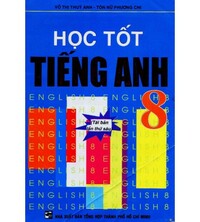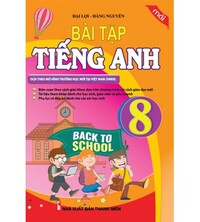Writing: An FAQ page - Unit 3. Adventure - SBT Tiếng Anh 8 Friends Plus
1 Match 1-6 with a-f. 2 Order the words to make sentences. 3 Read and complete the FAQ page with relative clauses a-f.4 Write an FAQ page about one of these adventure travel trends or choose your own. Research the trend and find out what it involves, or use your own knowledge.
Bài 1
1 Match 1-6 with a-f.
(Nối 1-6 với a-f.)
1 That school is the place
2 Clara is the friend
3 Skiing is a sport
4 That's the beach
5 These are the boots
6 They are the people
a which I wear for hiking.
b where he learned to surf.
c who organise the music club.
d which I've never tried.
e where my grandparents studied.
f who goes rock climbing with me.
Lời giải chi tiết:

1 That school is the place where my grandparents studied.
(Ngôi trường đó là nơi ông bà tôi học.)
2 Clara is the friend who goes rock climbing with me.
(Clara là người bạn đi leo núi cùng tôi.)
3 Skiing is a sport which I've never tried.
(Trượt tuyết là môn thể thao mà tôi chưa bao giờ thử.)
4 That's the beach where he learned to surf.
(Đó là bãi biển nơi anh ấy học lướt sóng.)
5 These are the boots which I wear for hiking.
(Đây là đôi bốt tôi mang để đi bộ đường dài.)
6 They are the people who organise the music club.
(Họ là những người tổ chức câu lạc bộ âm nhạc.)
Bài 2
2 Order the words to make sentences.
(Sắp xếp các từ để tạo thành câu.)
is/very/becoming/which/scuba-diving/ popular/is/a sport
Scuba-diving is a sport which is becoming very popular.
(Lặn biển là môn thể thao đang được rất nhiều người yêu thích.)
1 takes /is /your /who /over there /money / the person
……………………………………………………………
2 plan / this / can / where / a website / adventure trips /you / is
……………………………………………………………
3 where / the / that's / year / I / hostel / volunteered / last
……………………………………………………………
4 the player /Jay / is / scored / has / the / who / most
……………………………………………………………
5 I /kayaking / here's / use /the paddle /which / go / to
……………………………………………………………
Lời giải chi tiết:
1 The person who takes your money is over there.
(Người lấy tiền của bạn đang ở đằng kia.)
2 This is a website where you can plan adventure trips.
(Đây là trang web nơi bạn có thể lên kế hoạch cho những chuyến đi phiêu lưu.)
3 That’s the hostel where I volunteered last year.
(Đó là ký túc xá nơi tôi tình nguyện năm ngoái.)
4 The player who has scored the most is Jay.
(Cầu thủ ghi nhiều bàn nhất là Jay.)
5 Here’s the paddle which I use to go kayaking.
(Đây là mái chèo mà tôi dùng để chèo thuyền kayak.)
Bài 3
3 Read and complete the FAQ page with relative clauses a-f.
(Đọc và hoàn thành trang Câu hỏi thường gặp với các mệnh đề quan hệ từ a đến f.)
a which interests (sở thích nào)
b which you can (bạn có thể)
c which has become (trở thành)
d where you can (nơi bạn có thể)
e which involve (liên quan đến)
f who do this (ai làm điều này)
Voluntourism - frequently asked questions
What is voluntourism?
It's an adventurous type of travel c popular recently. Voluntourists take trips 1 …….. traditional sightseeing and voluntary work on a project abroad.
What types of work can you do?
There's a wide variety of projects all across the world, from teaching in schools to building houses or looking after animals. It's easy to find a project 2 ………. you.
How long is it for?
You can choose how long to spend working and travelling. Most of the people 3 ……….. spend one to three months abroad in total. Many students find it's best to volunteer in the summer holidays, when they've got more time.
Where can I find out more?
Check out online voluntourism websites to find out the latest projects 4 ………. try and the different places 5 ………… go.
Lời giải chi tiết:

Voluntourism - frequently asked questions
What is voluntourism?
It's an adventurous type of travel which has become popular recently. Voluntourists take trips which involve traditional sightseeing and voluntary work on a project abroad.
What types of work can you do?
There's a wide variety of projects all across the world, from teaching in schools to building houses or looking after animals. It's easy to find a project 2 which interests you.
How long is it for?
You can choose how long to spend working and travelling. Most of the people 3 who do this spend one to three months abroad in total. Many students find it's best to volunteer in the summer holidays, when they've got more time.
Where can I find out more?
Check out online voluntourism websites to find out the latest projects 4 which you can try and the different places 5 where you can go.
Tạm dịch:
Du lịch tình nguyện - những câu hỏi thường gặp
Hoạt động tình nguyện là gì?
Đó là một loại hình du lịch mạo hiểm đã trở nên phổ biến gần đây. Những người tình nguyện thực hiện các chuyến đi bao gồm tham quan truyền thống và làm việc tình nguyện trong một dự án ở nước ngoài.
Bạn có thể làm những loại công việc gì?
Có rất nhiều dự án trên khắp thế giới, từ giảng dạy trong trường học đến xây nhà hay chăm sóc động vật. Thật dễ dàng để tìm thấy một dự án 2 mà bạn quan tâm.
Nó kéo dài bao lâu?
Bạn có thể chọn thời gian làm việc và đi du lịch. Hầu hết những người làm công việc này đều dành tổng cộng từ một đến ba tháng ở nước ngoài. Nhiều sinh viên thấy tốt nhất nên tham gia tình nguyện vào kỳ nghỉ hè, khi họ có nhiều thời gian hơn.
Tôi có thể tìm hiểu thêm ở đâu?
Kiểm tra các trang web du lịch tình nguyện trực tuyến để tìm hiểu các dự án mới nhất 4 mà bạn có thể thử và những địa điểm khác nhau 5 nơi bạn có thể đến.
Bài 4
4 Write an FAQ page about one of these adventure travel trends or choose your own. Research the trend and find out what it involves, or use your own knowledge.
(Viết một trang Câu hỏi thường gặp về một trong những điều này xu hướng du lịch mạo hiểm hoặc chọn của riêng bạn. Nghiên cứu xu hướng và tìm hiểu xem nó liên quan đến điều gì hoặc sử dụng kiến thức của riêng bạn.)

Think of four questions and answers which give useful information about the trend, such as:
(Hãy nghĩ ra bốn câu hỏi và câu trả lời cung cấp thông tin hữu ích về xu hướng, chẳng hạn như:)
+ what it is and how it started (nó là gì và nó bắt đầu như thế nào)
+ how it works (cách thức hoạt động)
+ how to get involved(cách tham gia)
+ how to find out more (cách tìm hiểu thêm)
Use the FAQ page in exercise 3 to help you. Include relative clauses and the phrases on this page.
(Sử dụng trang Câu hỏi thường gặp trong bài tập 3 để giúp bạn. Bao gồm các mệnh đề quan hệ và các cụm từ trên trang này.)
Lời giải chi tiết:
Glamping FAQs
What exactly is glamping and where did the term originate?
Glamping is also known as posh camping, or luxury camping, and is in fact an amalgamation of the two words - it’s basically camping without any of the inconveniences and discomforts traditionally associated with ‘roughing’ it in the great outdoors.
Whereas traditional camping involves searching for a suitable spot and assembling your own accommodation for the night, when glamping, the accommodation is all set up, ready and waiting. No struggling with unruly tent poles, battling the elements or dealing with the ensuing arguments and inevitable disappointment - when you’re glamping you can just turn up, unpack and relax!
Where can you glamp?
Popular glamping options include yurts, tipis, pods, bell tents, cabins, domes, hobbit houses, treehouses and safari tents, but you may also find converted airstreams, caves, buses, fire engines, horse boxes and even tanks out there available to rent.
What to take glamping?
Whatever you like! Depending on the glampsite, you may need to take your own bedding, towels, toiletries or other bits and pieces, so it’s always worth checking in advance, but in general you just need to take whatever you’d take to stay in a hotel, plus whatever you may need to fully immerse yourself in the great outdoors. Don't forget that some glampsites are off-grid and may not have WiFi or mains electricity.
Tạm dịch:
Câu hỏi thường gặp về Glamping
Chính xác thì glamping là gì và thuật ngữ này bắt nguồn từ đâu?
Glamping còn được gọi là cắm trại sang trọng hoặc cắm trại sang trọng và trên thực tế là sự kết hợp của hai từ - về cơ bản, đó là cắm trại mà không có bất kỳ sự bất tiện và khó chịu nào thường gắn liền với việc 'tung hoành' ngoài trời.
Trong khi cắm trại truyền thống bao gồm việc tìm kiếm một địa điểm thích hợp và chuẩn bị chỗ ở cho riêng bạn để qua đêm, thì khi cắm trại, chỗ ở đã được chuẩn bị sẵn sàng và chờ đợi. Không phải vật lộn với những chiếc cột lều ngang ngược, chiến đấu với các yếu tố thời tiết hoặc đối phó với những tranh cãi sau đó và sự thất vọng không thể tránh khỏi - khi bạn đang cắm trại, bạn có thể chỉ cần bật lên, dỡ hành lý và thư giãn!
Bạn có thể glamp ở đâu?
Các lựa chọn glamping phổ biến bao gồm yurts, tipis, pod, lều chuông, cabin, mái vòm, nhà hobbit, nhà trên cây và lều safari, nhưng bạn cũng có thể tìm thấy các luồng khí, hang động, xe buýt, xe cứu hỏa, hộp ngựa và thậm chí cả xe tăng đã được chuyển đổi để thuê. .
Glamping nên dùng gì?
Bất cứ điều gì bạn thích! Tùy thuộc vào địa điểm glamping, bạn có thể cần mang theo ga trải giường, khăn tắm, đồ vệ sinh cá nhân hoặc các đồ dùng cá nhân khác, vì vậy, điều này luôn đáng để kiểm tra trước, nhưng nói chung bạn chỉ cần mang theo bất cứ thứ gì bạn cần để ở trong khách sạn, cộng với bất cứ điều gì bạn có thể cần để đắm mình hoàn toàn vào không gian ngoài trời tuyệt vời. Đừng quên rằng một số địa điểm glamping không có lưới điện và có thể không có WiFi hoặc nguồn điện chính.
Search google: "từ khóa + timdapan.com" Ví dụ: "Writing: An FAQ page - Unit 3. Adventure - SBT Tiếng Anh 8 Friends Plus timdapan.com"







